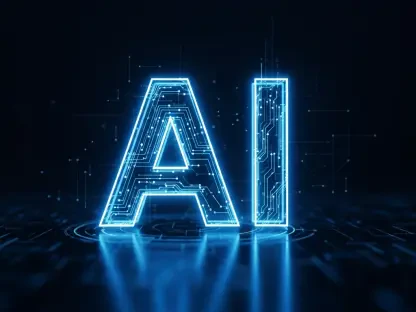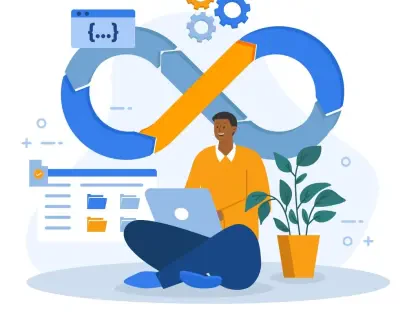The Landscape of Software Security
In an era where digital infrastructure underpins nearly every facet of modern life, software security stands as a cornerstone of technological stability, with breaches potentially costing billions and eroding trust across industries. The sheer scale of the challenge is staggering, as tens of thousands of vulnerabilities emerge each year within enterprise systems and open-source codebases, creating a relentless battle for defenders striving to stay ahead of malicious actors. This environment demands constant vigilance, as even minor flaws can cascade into catastrophic failures if exploited.
The ecosystem involves a complex interplay of security teams, developers, and adversaries, each navigating a landscape shaped by rapid advancements in automation and artificial intelligence. These technological influences have accelerated both the discovery and exploitation of flaws, amplifying systemic risks to critical business operations and national infrastructure. With such high stakes, the pressure to innovate in security practices has never been greater, as organizations grapple with protecting increasingly intricate software environments.
A key concern is the overwhelming volume of vulnerabilities, which often outpaces the capacity of human teams to address them effectively. The dynamic nature of code development, coupled with the persistent threat of zero-day exploits, underscores the urgent need for scalable solutions that can match the speed and sophistication of modern cyber threats. This sets the stage for groundbreaking tools that promise to redefine how security challenges are met.
Unveiling Aardvark: A Revolutionary Security Tool
Core Features and Functionality
Aardvark, developed by OpenAI, marks a significant leap forward as an autonomous, agentic security researcher powered by the advanced capabilities of GPT-5, designed to transform vulnerability management. Unlike traditional tools, it employs large language model-driven reasoning to analyze code behavior, mimicking the approach of a human researcher by reading, testing, and utilizing specialized tools. This enables a deeper understanding of software intricacies, far beyond surface-level scans.
The operational pipeline of this tool is comprehensive, starting with full repository analysis to build a threat model, followed by commit scanning to detect issues as code evolves, and extending to validation in sandboxed environments to confirm exploitability. It concludes with patch generation through integration with OpenAI Codex, offering actionable fixes for human review. Such a multi-stage process ensures precision and minimizes false positives, enhancing reliability in real-world applications.
Beyond identifying standard vulnerabilities, Aardvark excels at uncovering logic flaws, incomplete fixes, and privacy concerns, integrating seamlessly with platforms like GitHub to align with existing developer workflows. This adaptability ensures that security enhancements do not impede innovation, providing clear, actionable insights directly into the development cycle. Its human-like analytical approach positions it as a versatile ally for both security professionals and engineers.
Performance Metrics and Real-World Impact
Early testing of Aardvark within OpenAI’s internal codebases and through alpha partnerships has yielded impressive results, with the tool identifying 92% of known vulnerabilities in benchmark repositories, showcasing its high recall and practical effectiveness. These figures highlight its potential to serve as a reliable first line of defense, catching issues that might otherwise slip through manual or traditional automated checks. The data underscores a promising foundation for broader deployment.
In practical applications, the tool has already surfaced significant vulnerabilities internally at OpenAI, bolstering the organization’s defensive posture, while external partners have praised its ability to detect complex issues that manifest only under specific conditions. These early successes indicate that Aardvark can address nuanced security challenges often missed by conventional methods, offering depth in analysis that is critical for modern software environments.
Looking ahead, as Aardvark transitions from private beta to wider availability, its capacity to scale security expertise across diverse organizations holds transformative potential. The ongoing refinement during beta phases will likely further enhance its accuracy and integration capabilities, paving the way for a tool that could become indispensable in the fight against cyber threats. This trajectory suggests a future where advanced AI tools redefine security standards.
Challenges in Software Security and Aardvark’s Solutions
The field of software security faces daunting obstacles, with over 40,000 Common Vulnerabilities and Exposures (CVEs) reported in recent data, reflecting an overwhelming volume that strains even well-resourced teams. Additionally, studies indicate that approximately 1.2% of code commits introduce bugs, often minor changes with disproportionately large consequences if exploited. This rapid pace of development and error introduction creates a relentless cycle of risk that traditional methods struggle to contain.
Conventional approaches such as fuzzing and software composition analysis, while useful, often fall short in addressing the dynamic and intricate nature of modern codebases, lacking the contextual understanding needed for comprehensive threat detection. Aardvark counters these limitations by leveraging LLM-powered reasoning to interpret code intent and behavior, identifying not just known vulnerabilities but also subtle flaws that evade standard tools. This represents a paradigm shift in how security assessments are conducted.
Despite its promise, adoption barriers remain, including integration complexities with existing systems and the need to build trust in AI-generated patches among developers and security professionals. During the private beta phase, strategies to address these challenges include iterative feedback loops with early users to refine workflows and enhance transparency in decision-making processes. Overcoming these hurdles will be crucial to ensuring that Aardvark fulfills its potential as a widely accepted security solution.
Regulatory and Ethical Considerations in AI-Driven Security
Navigating the regulatory landscape for AI-driven security tools involves adhering to strict standards around responsible disclosure and data protection, ensuring that vulnerability findings do not inadvertently aid malicious actors. Compliance with global frameworks is essential, as organizations must balance transparency with the need to safeguard sensitive information. This delicate balance shapes how tools like Aardvark are deployed and managed in regulated environments.
OpenAI has taken proactive steps by updating its outbound coordinated disclosure policy to prioritize developer-friendly collaboration over rigid timelines, fostering an environment where fixes can be implemented sustainably without undue pressure. This approach aims to build trust with the software community, ensuring that security enhancements contribute positively to the broader ecosystem. Such policies are vital for maintaining credibility and cooperation in vulnerability management.
Ethically, Aardvark’s commitment extends to supporting non-commercial open-source projects through pro-bono scanning, reinforcing the safety of the software supply chain that underpins much of today’s digital infrastructure. By contributing tools and findings, the initiative aligns with a mission to enhance overall digital safety, demonstrating how AI can be harnessed for public good while navigating the complex ethical terrain of security research.
The Future of Security Research with Aardvark
AI-driven tools like Aardvark signal a profound shift in software security, with the potential to disrupt traditional workflows by automating complex analysis and democratizing access to high-level expertise across organizations of varying sizes. This evolution could fundamentally alter how teams approach vulnerability management, shifting from reactive fixes to proactive prevention. The implications for efficiency and coverage are substantial.
Emerging trends facilitated by such tools include continuous protection that adapts as code evolves, early detection of flaws before they become exploitable, and validation of real-world exploitability to prioritize critical issues. These advancements suggest a future where security is seamlessly embedded into the development lifecycle, reducing the window of opportunity for adversaries. The focus on real-time adaptability marks a significant departure from static security models.
Broader implications of agentic AI in this domain encompass not just technological innovation but also regulatory shifts and a growing global demand for robust digital infrastructure. As these tools mature, they could redefine industry standards, influencing how policies are crafted and how security resources are allocated worldwide. This convergence of technology and policy will likely shape the next generation of cybersecurity strategies.
Conclusion: A New Era for Software Security
Reflecting on the journey of Aardvark, its early deployment revealed a powerful ally in the battle against software vulnerabilities, demonstrating tangible impact through internal testing and alpha partnerships during the private beta phase. The tool’s ability to identify critical flaws and propose actionable fixes stood out as a game-changer, offering a glimpse into a more secure digital landscape that balanced protection with innovation.
As discussions unfolded, it became evident that scaling such AI-driven solutions required addressing integration challenges and building trust with diverse stakeholders, a process that gained momentum through collaborative refinement in the beta stages. This iterative approach paved the way for broader adoption, setting a precedent for how technology could bridge gaps in security expertise across industries.
Looking ahead, the next steps involved expanding access through structured beta participation, encouraging organizations and open-source communities to engage directly in shaping the tool’s evolution. This collaborative spirit promised not only to enhance Aardvark’s capabilities but also to foster a collective movement toward stronger, more resilient software ecosystems, addressing future threats with unprecedented precision.









